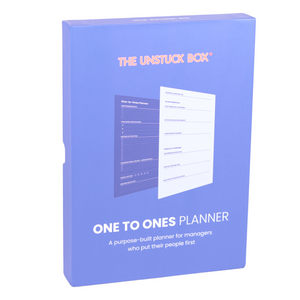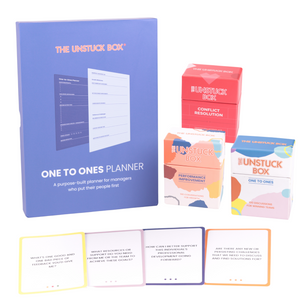If you manage people, one‑on‑ones are the highest‑leverage meeting you run. They raise alignment, catch issues earlier, and strengthen the relationship that ultimately drives performance and the working relationship between manager and employee.
-
In aggregated studies, employees whose managers hold regular 1:1s are almost 3× more likely to be engaged. Weekly cadences correlate with ~20% lower anxiety and ~12% higher self‑reported success versus less frequent meetings. Consistency matters: when organizations stopped structured monthly 1:1s, performance deteriorated within ~18 months. Even 1 meeting per week can significantly impact employee engagement and performance.
-
The shape of a great 1:1 is structured but humane: start with a quick personal check‑in; review last actions; prioritize the employee’s agenda first; align on priorities; unblock; exchange feedback (both ways); touch career growth periodically; cover foundational ground early in the relationship; close with clear next steps. The ideal duration for a one-on-one is one hour to allow for meaningful discussions.
For practical techniques on tone, questions, and cadence, see The Unstuck Box’s guide to How to have effective one‑on‑ones (it pairs perfectly with these templates).
A well‑structured one‑on‑one template (if you're in a rush, you'll find our set of printable, free one on one templates here) is crucial for productive meetings and healthier working relationships. Expectations and meeting formats should be clearly outlined in advance. Using a free template helps managers prepare, stay on track, and document decisions, as well as schedule regular meetings and maintain consistency.
Prefer a tactile, zero‑friction option? The Unstuck Box: One to Ones Planner gives you a repeatable structure and high‑quality prompts on paper—fast and distraction‑free. It can be used in any company, regardless of size or structure.
Introduction to One on One Meetings
One on one meetings are the cornerstone of effective management, providing a dedicated time for managers and team members to connect beyond the daily rush. These meetings create a safe space to discuss work priorities, address challenges, and share concerns in a focused, supportive environment. By setting aside regular time for these conversations, managers can offer constructive feedback, help team members navigate obstacles, and support their ongoing career development.
A well-structured one on one meeting isn’t just about checking off tasks—it’s about building trust, improving communication, and ensuring everyone is aligned on goals and expectations. Using a free template can help guide the conversation, making sure important topics like development, feedback, and priorities are never overlooked. When managers consistently invest in these meetings, they foster stronger relationships, boost team morale, and drive better results for everyone involved.
Download: One‑on‑One Meeting Template by Scenario
All of these templates are printable and free.
| Template Name | Best For | Downloads |
|---|---|---|
| The Weekly Check-In Template | Regular operational alignment and relationship building. This template aligns with research showing that weekly one-on-ones best strengthen the manager-employee connection and allow timely coaching on obstacles or opportunities. The time allocations keep conversations focused while ensuring nothing critical gets missed. | PDF DOCX Google Docs |
| The New Employee Onboarding Template | First 90 days with a new team member. This progressive approach reflects the research on "task-relevant maturity." An inexperienced employee benefits from close guidance and regular touchpoints, sometimes even twice weekly during their first month. | PDF DOCX Google Docs |
| The Remote Team Member Template | Virtual one-on-ones requiring extra attention to connection. Research emphasizes that feelings of isolation in remote workers can erode trust, mainly when communication quality drops. This template specifically addresses those unique challenges. | PDF DOCX Google Docs |
| The Career Development Focus Template | Quarterly or bi-annual development discussions. This template transforms vague career conversations into concrete planning sessions. | PDF DOCX Google Docs |
| The Skip-Level Meeting Template | Senior leaders meeting with indirect reports. This template helps senior leaders gather insights while avoiding undermining direct managers. | PDF DOCX Google Docs |
Why Templates Matter
Let’s be clear: a template isn’t a script. It’s not about robotically working through a checklist or turning human connection into a bureaucratic exercise. Instead, think of templates as the architectural blueprints for meaningful conversation—they provide structure while leaving plenty of room for authentic dialogue with the specific person you’re meeting, fostering connection and understanding.
A well-structured one on one meeting template is crucial for successful meetings and improved working relationships. As we’ve explored in depth, effective one-on-ones require mastering six essential elements—but even with that knowledge, translating theory into practice requires practical tools and well-defined processes that support effective meetings.
Using one of these free one on one meeting template can help managers prepare and conduct effective one-on-one meetings by:
-
Creating consistency: When both parties know what to expect, anxiety decreases and productivity increases
-
Ensuring coverage: Important topics like career development don’t get lost in the urgency of immediate tasks
-
Building accountability: Written records create a trail of commitments and progress
-
Saving time: No more scrambling to figure out what to discuss or forgetting key points
-
Facilitating preparation: Team members can contribute agenda items in advance and are encouraged to bring topics to the meeting
The research backs this up emphatically. Employees need to know what’s expected, and one-on-ones are a perfect forum to recalibrate priorities or adjust workloads. Templates ensure these critical conversations and structured discussions actually happen rather than getting squeezed out by the crisis of the day.
The Hidden Cost of Unstructured Meetings
Consider what happens without structure. When organizations implemented structured monthly one-on-ones, performance improved—and when they later stopped these meetings (to "save time"), performance deteriorated significantly within 18 months. The message is clear: structure isn't bureaucracy—it's the foundation of sustainable performance.
Moreover, the stakes are particularly high for remote and hybrid teams. Remote employees can't benefit from hallway conversations or quick desk check-ins, so the scheduled one-on-one often becomes the main vessel for communication and connection with their manager. Without a template to guide these virtual conversations, critical topics can easily fall through the cracks.
Meeting Templates for Different Scenarios (How to Use Them Well)
-
Make it truly employee‑led. Ask your direct report to set the agenda and send a quick pre‑read or bullets beforehand. You then add your items—but theirs go first. Encourage open talk during the meeting to foster dialogue and understanding. This increases autonomy and voice, which boosts engagement.
-
Keep status out; keep coaching in. Handle routine checklist updates async; use live time for problem‑solving, priority tradeoffs, and support.
-
Close the loop. Start each meeting by reviewing last week’s commitments; end by summarizing new actions (who/what/when). Reliability compounds trust.
-
Feedback both ways. Recognize wins (aim for a positive‑to‑corrective ratio) and explicitly invite upward feedback: “What’s one thing I can do differently next week?”
-
Cadence: weekly > biweekly > monthly. Weekly is ideal if feasible; at minimum, never less than monthly. Consistency in 1 meetings is key for ongoing development and relationship building.
The Contrarian view on One on One Meetings
Some high‑profile leaders minimize one to one meetings altogether, arguing they can devolve into therapy for team members or nitpicking. If you adopt that stance, ensure your alternative creates equal or better mechanisms for coaching, decision velocity, and psychological safety. Evidence still favors well‑run 1:1s for engagement and performance.
Best Practices for Giving Feedback
Giving feedback in one on one meetings is both an art and a science. The most effective managers use these sessions to provide constructive feedback that is timely, specific, and actionable. Here are some best practices to keep your feedback helpful and growth-oriented:
-
Be specific and objective: Focus on concrete examples rather than generalizations. This helps your team member understand exactly what went well or what could be improved.
-
Balance positive and constructive feedback: Recognize achievements and strengths before addressing areas for improvement. A healthy ratio keeps motivation high and the conversation balanced.
-
Make it a two-way street: Invite your direct report to share their own feedback and ideas. Ask open-ended questions like, “What’s one thing I can do to support you better?”
-
Tie feedback to development: Connect your observations to the team member’s career goals and growth. Offer guidance and resources to help them improve and advance.
-
Follow up: Use your meeting template to track progress on feedback and revisit action items in future check ins. This shows you’re invested in their success and keeps improvement on course.
By making feedback a regular, supportive part of your one on one meetings, you create a culture of open communication and continuous development.
Building Strong Relationships Through One on Ones
One on one meetings are more than just a time to review tasks—they’re a powerful tool for building strong, trusting working relationships. When managers dedicate time to meet with each team member individually, it signals that their contributions and well-being matter.
These meetings give employees a chance to share their ideas, voice concerns, and discuss challenges in a confidential setting. Over time, this regular check in helps break down barriers, encourages honest communication, and builds psychological safety. Managers who listen actively and show genuine interest in their team members’ development foster loyalty and engagement.
Strong relationships built through consistent one on one meetings lead to better collaboration, higher morale, and a more resilient team. By using a structured template to keep the conversation flowing and ensure everyone’s voice is heard, managers can create an environment where employees feel supported, valued, and empowered to succeed.
Addressing Diversity and Inclusion in One on One Meetings
One on one meetings are a unique opportunity to advance diversity, equity, and inclusion within your team. By creating a space where every team member feels heard and respected, managers can help ensure that diverse perspectives are valued and that everyone has equal access to support and development.
Using Technology to Enhance One on One Meetings (without killing the vibe)
For remote one-on-ones, technology becomes even more critical. Nonverbal cues—facial expressions, tone, body language—provide rich context that is lost in text or voice alone. Consider these enhancements:
-
A shared doc as the “source of truth”
Use one of the templates in Google Docs or Word. Pin the link to the recurring calendar invite. Maintain a running log so action items roll forward. (This structure—agenda → decisions → next steps—improves follow‑through.)
-
Start with a 30‑second check‑in (energy/clarity), then move to the topics.
-
Keep action items at the top of the next meeting’s doc.
-
-
Lightweight spreadsheet for actions & risks
The XLSX/CSV templates here are built for quick triage (Owner / What / Due / Status).
-
Video on (especially remote/hybrid)
Non‑verbal cues reduce misreads and help you catch friction early. Share screen on tricky items so you co‑edit the doc live.
-
Pre‑read + “one new idea”
If you're still struggling with words or pacing in the sessions, borrow a winning pattern from top performers: send a brief pre‑read with What went well / What I’m working on / One new idea. It keeps the 1:1 strategic and future‑oriented.
-
Paper beats procrastination
If you or your managers get stuck in tooling, go analog for a while: the Unstuck Box: One to Ones Planner gives you a tactile flow and prompts that keep conversations moving.
For more conversation craft, see how to have effective one‑on‑ones.
FAQs
-
How long should a 1:1 be? 25–30 minutes weekly (or ~50 minutes biweekly) is a solid target; prioritize the employee’s agenda and avoid status monologues. For maximum effectiveness, aim for about an hour to allow enough time for meaningful conversation and to cover essential topics.
-
How often? Weekly if you can; otherwise every two weeks, but don’t drop below monthly. Make it recurring, inviolable, and always reschedule instead of canceling (top tip from Steven Rogelberg). Maintaining a consistent schedule helps foster ongoing communication and relationship building.
-
What’s the minimum viable structure? Personal check‑in → last actions → their agenda → priorities & blockers → two‑way feedback → action items & next date.
-
How should I structure a 1:1 with a new employee? Focus on building trust, providing orientation, and establishing routines in your early meetings. Use these sessions to help the new employee integrate into the team, answer questions, and set expectations for future one-on-ones.
-
What does status quo mean in a 90-day review? Status quo refers to the current state or existing situation of the employee’s performance or role. In a 90-day review, it’s important to reflect on the status quo before discussing future improvements or changes.
Conclusion
-
One on one meetings are essential for effective communication, career development, and employee success.
-
Using a meeting template helps guide the conversation, ensure all topics are covered, and track progress.
-
Regular meetings and progress tracking are crucial for employee development and success.
-
By implementing effective meeting strategies and using technology to enhance meetings, managers can improve communication, provide constructive feedback, and help employees achieve their career goals.
-
If you are interested in more tips or resources, check out our additional guides and tools for one-on-one meetings.




